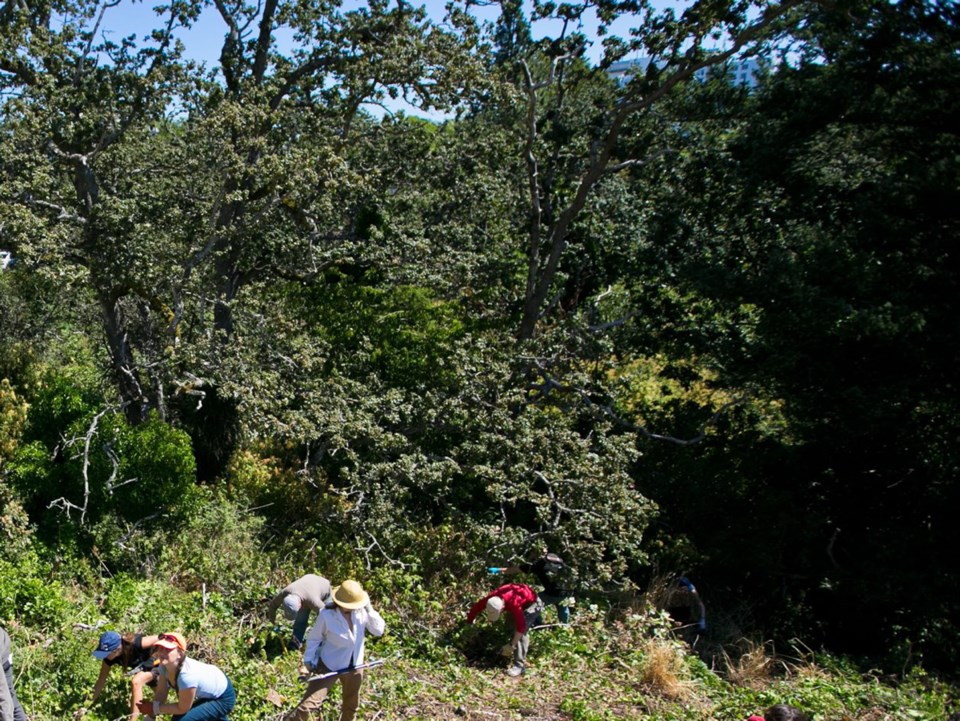On the heels of a World Wildlife Fund report that says almost two-thirds of the world’s biodiversity has been lost since 1970, local experts say Vancouver Island’s environment is an example of extremes.
We have one of the highest rates of biodiversity in the country, University of Victoria conservation biologist Brian Starzomski said. But we also have among the most species at risk.
“The biodiversity in the [capital region] is enormous, because we’ve got the coastal western-hemlock forests with great, big trees extending to Sooke and so on. We have mountains. And we have all these Garry oak savannahs around town,” Starzomski said.
“And we’ve also got the highest number of species at risk of probably any jurisdiction, definitely in the province and probably amongst the highest in Canada.”
B.C. is home to 1,258 vertebrates, 3,190 vascular plants, 4,500 marine invertebrates and more than 35,000 insects, according to the Stewardship Centre of B.C.
The B.C. Conservation Data Centre lists 1,649 species as extirpated, endangered, threatened or of special concern. Among those, 210 are in the capital region.
While British Columbia is “far and away” the most biodiverse province, with about half of all species in Canada found here, areas near the southern border, where human populations are concentrated, are especially vulnerable to loss, Starzomski said.
In the capital region, about 90 per cent of rich Garry oak ecosystems have been lost to development. Local species lost or at risk include southern resident killer whales, the Western screech owl and Lewis’s woodpecker.
Just this week, researchers at the University of California, Davis said a wasting disease is devastating sunflower sea stars, threatening the Salish Sea ecosystem.
But Starzomski said there’s hope: Some local restoration efforts have proven successful. Western blue-bird populations are returning to the Cowichan Valley, for example, and perennial herb golden paintbrush has been reintroduced in the Gulf Islands National Park Reserve.
Joel Gibson, curator of entymology at the Royal B.C. Museum, said one of the biggest problems for B.C. is a lack of documentation. There tends to be more information about vertebrate species, for example, and better records kept in places such as Victoria and Vancouver, with spotty documentation in other parts of the province.
“We can’t even be sure how much we’re losing because certainly, for plants and insects, we don’t have a good current picture to see what’s being lost,” Gibson said.
There’s also a lack of monitoring of invasive species such as the European wall lizard in Victoria that might pose threats to native ones, he said.
Anecdotally, some trends can be seen in the way species have been documented in the museum’s collection, such as some species of bumble bees.
“If you look at our collection, which goes back 130 years, we can see patterns of things that used to be collected in large numbers in certain areas that maybe we’re seeing collected less often,” Gibson said.
According to the World Wildlife Fund report, global populations of fish, birds, mammals, amphibians and reptiles declined by 58 per cent between 1970 and 2012, the most recent year with available data. It projects global wildlife could plunge 67 per cent over the 50-year period between 1970 and 2020.
“It’s really unprecedented, except in the Ice Age and during other cataclysmic events. And when you look back since the 1970s, the causes are really pronounced: Increasing population; increasing pollution; increasing habitat disruption, for example, with urban areas paving over wetlands; and of course, climate change,” said David Miller, president and CEO of WWF Canada.



